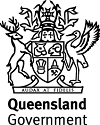Published Wednesday, 17 February, 2021 at 12:01 PM

Minister for the Environment and the Great Barrier Reef and Minister for Science and Youth Affairs
The Honourable Meaghan Scanlon
Government funding improving Great Barrier Reef water quality
Improved farming practices backed by Australian and Queensland Government funding are seeing a record rate of improvement in the amount of nutrient run-off flowing from farms to the Great Barrier Reef.
The Reef Water Quality Report Card 2019 released today by the Federal Minister for the Environment Sussan Ley and Queensland Minister for the Environment and the Great Barrier Reef Meaghan Scanlon shows a reduction in dissolved inorganic nitrogen discharging from all Great Barrier Reef catchments, giving a cumulative reduction of 25.5% since 2013.
Farmers in the Wet Tropics and Burdekin regions were the main contributors to water quality improvements in 2018-2019.
The Australian and Queensland governments have invested $667 million (from 2017-2018 to 2022-2023) to support farmers and landholders reduce the pollution leaving Great Barrier Reef catchments.
“The report shows that where strong programs are in place, that we can and are making a difference,” Minister for the Environment Sussan Ley said.
“We have invested in further programs since the period covered in the report and are committed to further reef water quality improvements.
“The fact that the overall marine condition remains poor underlines the importance of those investments.”
Minister Scanlon said the report card highlighted a continued drop in the levels of dissolved inorganic nitrogen discharging from catchments into the Reef.
“The overall reduction in dissolved inorganic nitrogen, the Reef’s highest risk marine pollutant, was 4.3% in the 2018-2019 year alone,” Minister Scanlon said. “The cumulative reduction of 25.5% since 2013 is positive for the future of the Reef”
“Sugarcane and banana growers in the Wet Tropics and Burdekin regions were the main contributors to 2018-2019 result with improvements in chemical fertiliser and irrigation use.
“Yet we must continue this trajectory. It has been pleasing to hear of increased compliance with 2019 reef protection laws which introduced chemical, erosion and other practice standards.”
The report card draws upon the best available science and monitoring programs to capture progress towards the targets with new and updated information helping to drive continuous improvement.
Ministers Ley and Scanlon have also announced the five-yearly review of the Reef 2050 Water Quality Improvement Plan will start with an independent review of the land management practice targets. Industry and other stakeholders will be consulted through the review.
The aim will be to better align the management practice targets with the finer scale water quality targets which vary across catchments, including considering how the targets are set and how progress will be measured.
Report card 2019 highlights include:
- A 4.3% modelled reduction in dissolved inorganic nitrogen loads across the Great Barrier Reef catchments. The greatest reductions were in the Wet Tropics (7.4%) and Burdekin (4.5%) regions.
- A 1.3% modelled reduction in fine sediment loads in the Mary catchment (Burnett Mary region).
- The Burdekin and Wet Tropics regions recorded the largest increase in best practice nutrient management for sugarcane, up 6.3% and 6.1% respectively.
- The Kolan catchment (Burnett Mary region) met the pesticide target to protect at least 99% of aquatic species.
- The Pioneer catchment (Mackay Whitsunday region) recorded the greatest improvement in pesticides (up 4.5%) with 80.5% of aquatic species protected from their harmful effects .
The interactive Reef Water Quality Report Card 2019 is available here: https://reportcard.reefplan.qld.gov.au/
ENDS
Minister Ley’s office:
John Brady 0427 867 638
Ben Flores 0448 463 094
Minister Scanlon’s office:
Richard O’Leary 0447 155 332

